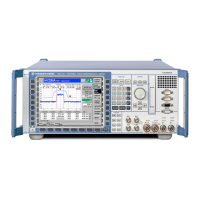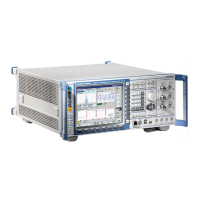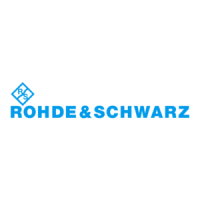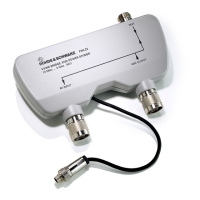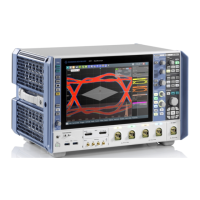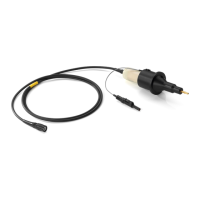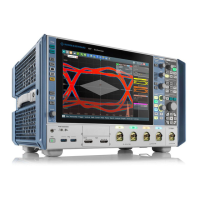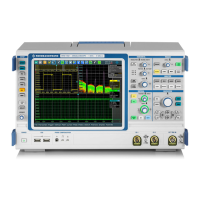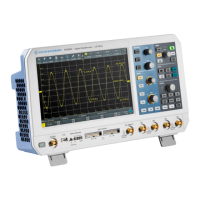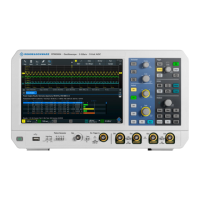Measurement Control CMU
1100.4903.12 5.28 E-8
Measurement Control
The CMU offers a variety of measurements which are arranged in function groups and measurement
groups. All measurements are controlled according to the same basic concepts. The benefit of this
structure lies in the close analogy of all function groups. Commands belonging to different measure-
ments have the same structure and syntax.
The following sections are devoted to the principles of measurement control:
• A measurement group can be split up into different subgroups by means of applications (optional,
i.e. not available for every measurement group).
• Four different measurement states are defined; they can be accessed with a set of measurement
control commands.
• The end of the measurement (or of a particular measurement stage) can be indicated by means of
the event reporting system.
• Statistical settings comprising the repetition mode, statistic count (optional), stop condition (op-
tional), and display mode (optional) control how the measurement is performed. The possible
measurement states depend on the repetition mode.
• The current status and the results of the measurement can be queried in a systematic way.
Some measurements do not require the full scheme. E.g., the function group RF Non Signalling de-
scribed in this manual uses none of the features characterized as optional in the above enumeration.
Examples for these features can be found in the operating manuals for digital network tests, e.g.,
GSM900/1800/1900-MS.
Applications
Applications are different measurements belonging to the same measurement group. Each application
is assigned its own set of configuration parameters. With few exceptions (e.g. some tolerance values),
all parameters assigned to the applications can be different from each other. Thus, applications effec-
tively split up a measurement group into various independent subgroups which can be configured indi-
vidually and serviced in parallel.
The benefit of this feature is that the results of an application will not become invalid when another ap-
plication in the same measurement group is started.
Applications are generally identified by the third-level keyword in a command while the measurement
group is identified by the second-level keyword. Examples can be found in the operating manuals for
the network tests.
Measurement Control Commands and States
Measurement control commands are used to switch over between the following four measurement
states:
OFF measurement is switched off, no results available (after STOP)
RUN measurement is running
STOP measurement has been stopped, valid results are preserved
STEP measurement has been interrupted after a statistics cycle (in repetition mode Continu-
ous or Counting with Stepping mode set in addition). The next cycle must be launched
with a CONTinue command.
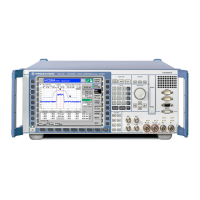
